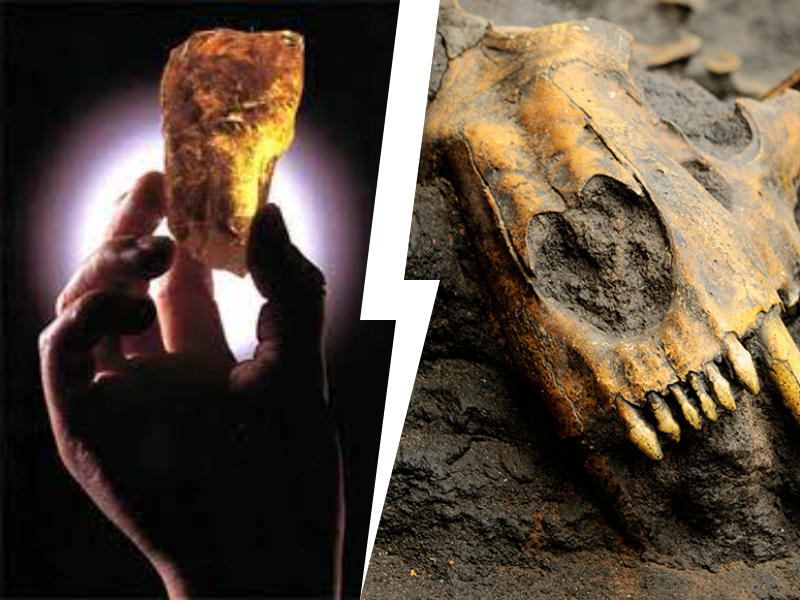
Crouching Hu Po, Hidden Long Gu?
What is Hu Po succinum or amber?
When it comes to amber, also known as succinum in Latin and Hu Po in Mandarin, everyone seems know it well that this is a beautiful stone with a variety of colors, such as golden, yellow, orange-red, green, blue, and black. What’s more, among them the clear one looks like crystal, the bright one like pearl and the lustrous like agate. As a matter of fact, it is kind of fossilized resin of prehistoric pine trees and has long been the traditional jewelry wore by European aristocracy on behalf of the qualities of noble, classic, and subtle. Nevertheless, don’t forget that amber is also a valuable medicinal herb that is commonly used in homeopathy and good at relieving convulsion and soothing the nerves.As mentioned above, this is kind of fossil resin – the resin was buried in the ground tens of millions of year ago and formed by a certain chemical changes. It has various shapes, often externally with lines left when resin flowed and internally with visible bubble and ancient insect or plant debris. Its English name amber comes from the Latin name of Ambrum, which means “essence.” But some claimed that it came from Arabic “Anbar”, which means “gum” because the Spaniards called both the buried Arabic gum and amber as amber. And in the eye of ancient Chinese mind amber means tiger soul.
Main chemical constituents are resin, volatile oil, diabietinolic acid, succinosilvic acid, succinoresinol, succinoabietol, succinic acid, borneol, succoxyabietic acid, succinoabietinolic acid, and elements like sodium, strontium, silicon, iron, tungsten, magnesium, aluminum, cobalt, and gallium.
But you may not know that it can also be used as a Chinese herb. It was first seen in Ming Yi Bie Lu (Miscellaneous Records of Famous Physicians), by Tao Hong-Jing in 500 A.D., in which the writer amazed at the nature’s grand creations of millennium pines, let alone the amber changed from resin of prehistoric pine trees in tens of millions of years ago. And according to “Compendium of Materia Medica”, it was commented with medicinal properties of tranquilizing viscera, securing soul, eliminating extravasated blood, healing poison produced by venomous insects, and so on. This record has stated that succinum has medical effects and this herb, including amber succinum extract, long been used in Traditional Chinese medicine (TCM) and homeopathic remedy.
Chinese Herbs Hearling https://www.chineseherbshealing.com/proven-herbal-remedies/succinum.html
Succinum is the Latin term for a substance that is ultimately derived from sap (succus is Latin for sap or juice). The collected material is more commonly referred to as amber, a term derived from an Arabic word anbar, that had been used for another and unrelated substance, which we call ambergris or grey amber (a secretion from whales found in small lumps washed up on the beach). Succinum originates from the resin of ancient and long-extinct trees, including conifers (e.g., pine trees) as well Fabaceae and other genera. To become amber, the resin has resided in the ground for millions of years. Amber is best known from the selection of transparent yellowish pieces (other colors are also available) used in making jewelry and sculptures. In this article, the subject is its medicinal use, focusing on Chinese medical applications.
Not all amber is derived from pine resin, as other trees also release similar resins, but pines are considered a primary source. Pine resin contains a number of aromatic compounds: the terpenes, such as pinene, carene, sabinene, limonene, etc., which may be lost during the period of aging to become amber. There are also molecules that give the resin its sticky quality, such as those that make up the hardened pine resin product called colophonium (rosin), mainly abietic acid (image above) and pimaric acid.
These compounds found in pine resin are either pure hydrocarbon (pinene is an example of a pure hydrocarbon, containing only carbon and hydrogen), or hydrocarbons with small amounts of oxygen. There is very little of any other element in the resin (some resins may contain sulfur; a small amount of minerals might be present).
When the tree resin resides in the ground for millions of years, it hardens as moisture is lost and as some of the hydrocarbons cross-link (polymerize) to form longer chains. Pine resin has a relatively low cross-linking capability, so the process is slow and limited. The resulting amber is still chemically similar to the original resin, but it contains more of an essentially inert hydrocarbon mass, which is what gives it the hardness and glass-like nature that is appreciated when using amber for decorative items. Amber still contains some of the larger terpene molecules (4). In a single study of Baltic amber reported in 1877, but repeated by most modern authors, it was said to have 3-8% succinate (succinic acid), which is probably a derivative of the original simple terpenes.
Succinum (Amber) – Use in Chinese Medicine by Subhuti Dharmananda, Ph.D., Director, Institute for Traditional Medicine, Portland, Oregon http://www.itmonline.org/arts/amber.htm
What is Long Gu?
Oguri K, Nishioka Y, Kobayashi Y, Takahashi K. Taxonomic examination of longgu (Fossilia Ossis Mastodi, “dragon bone”) and a related crude drug, longchi (Dens Draconis, “dragon tooth”), from Japanese and Chinese crude drug markets. J Nat Med. 2017 Jul;71(3):463-471. doi: 10.1007/s11418-016-1062-5. Epub 2017 Feb 20. PMID: 28220276.


Leave a Reply